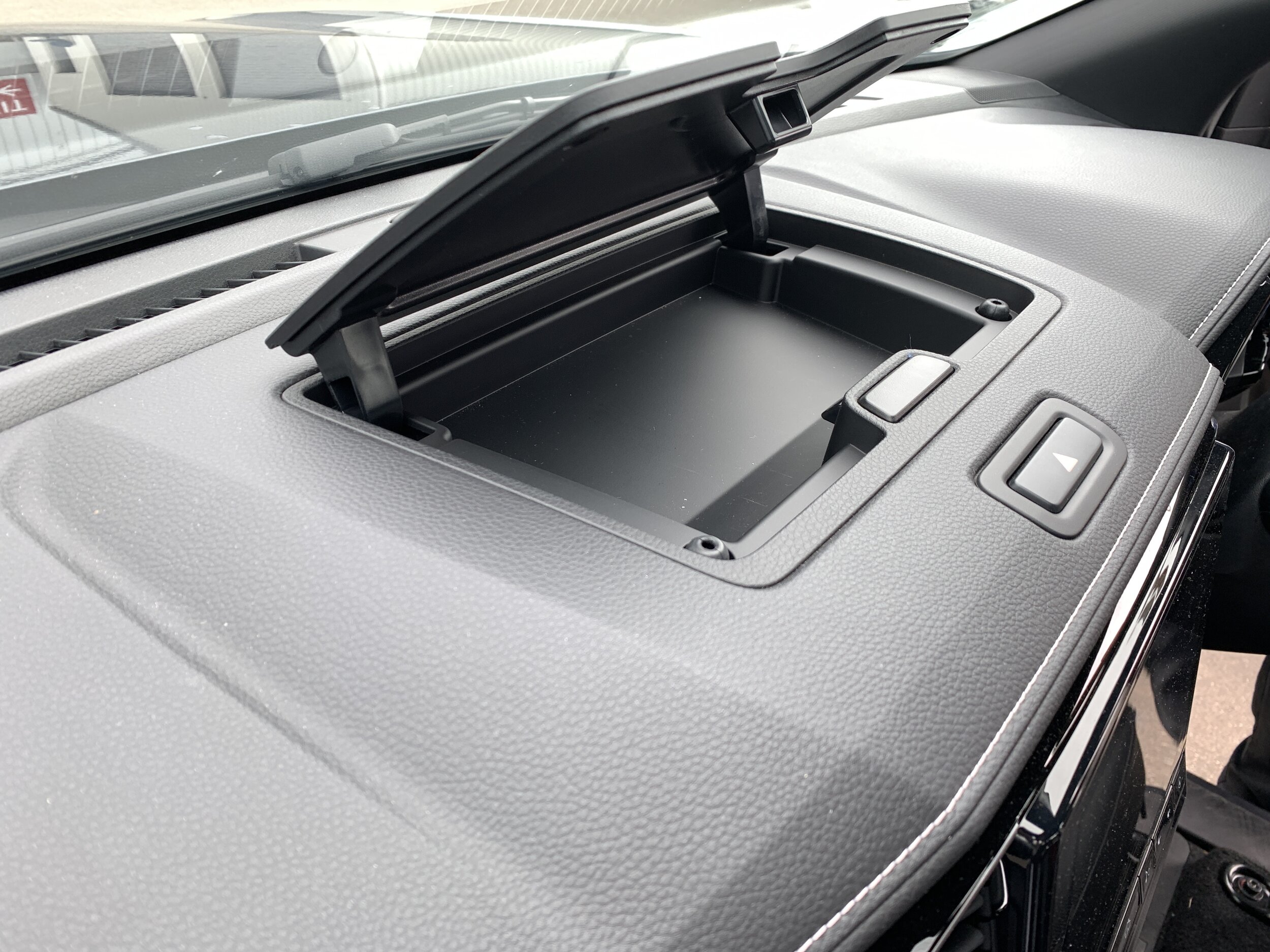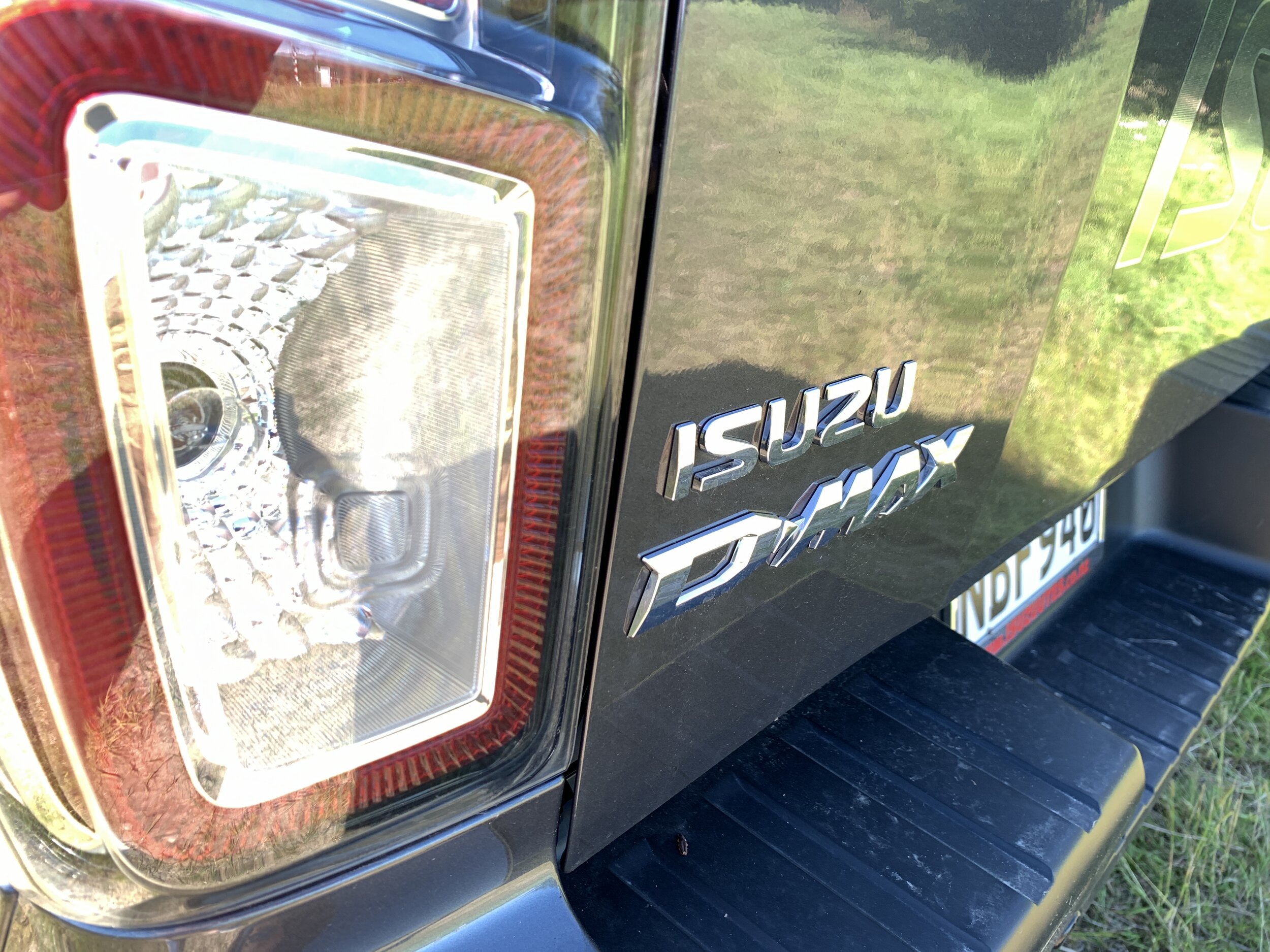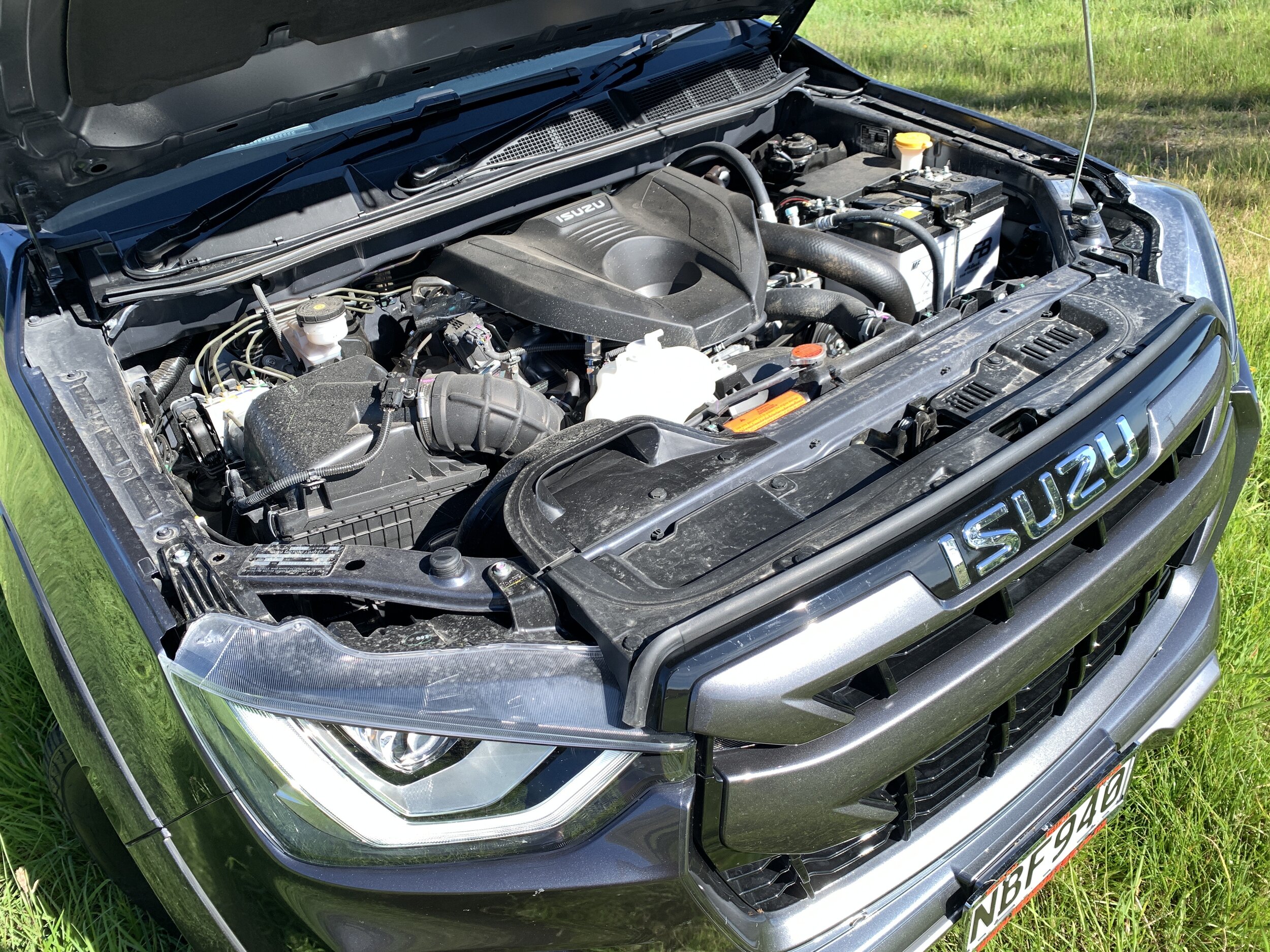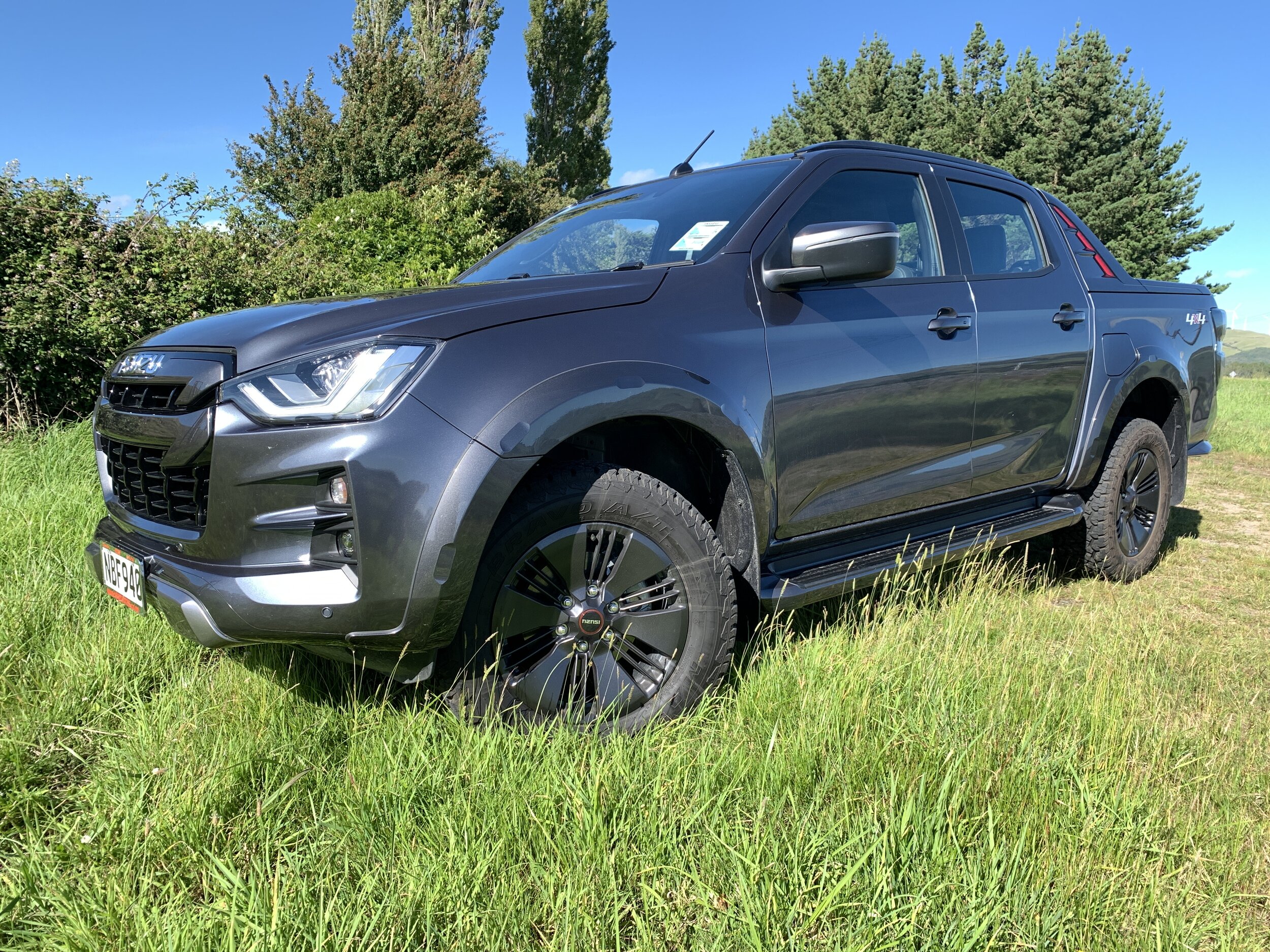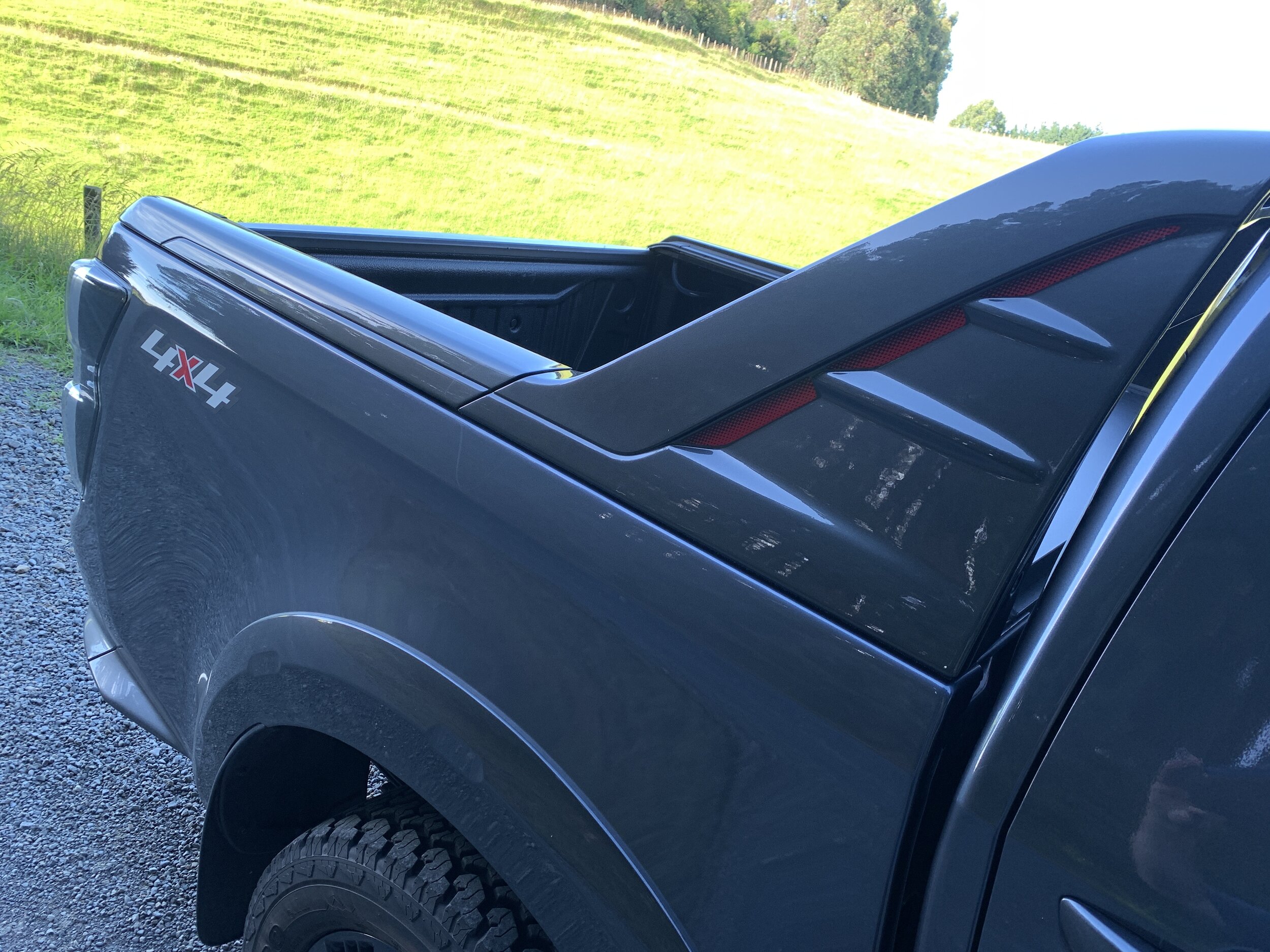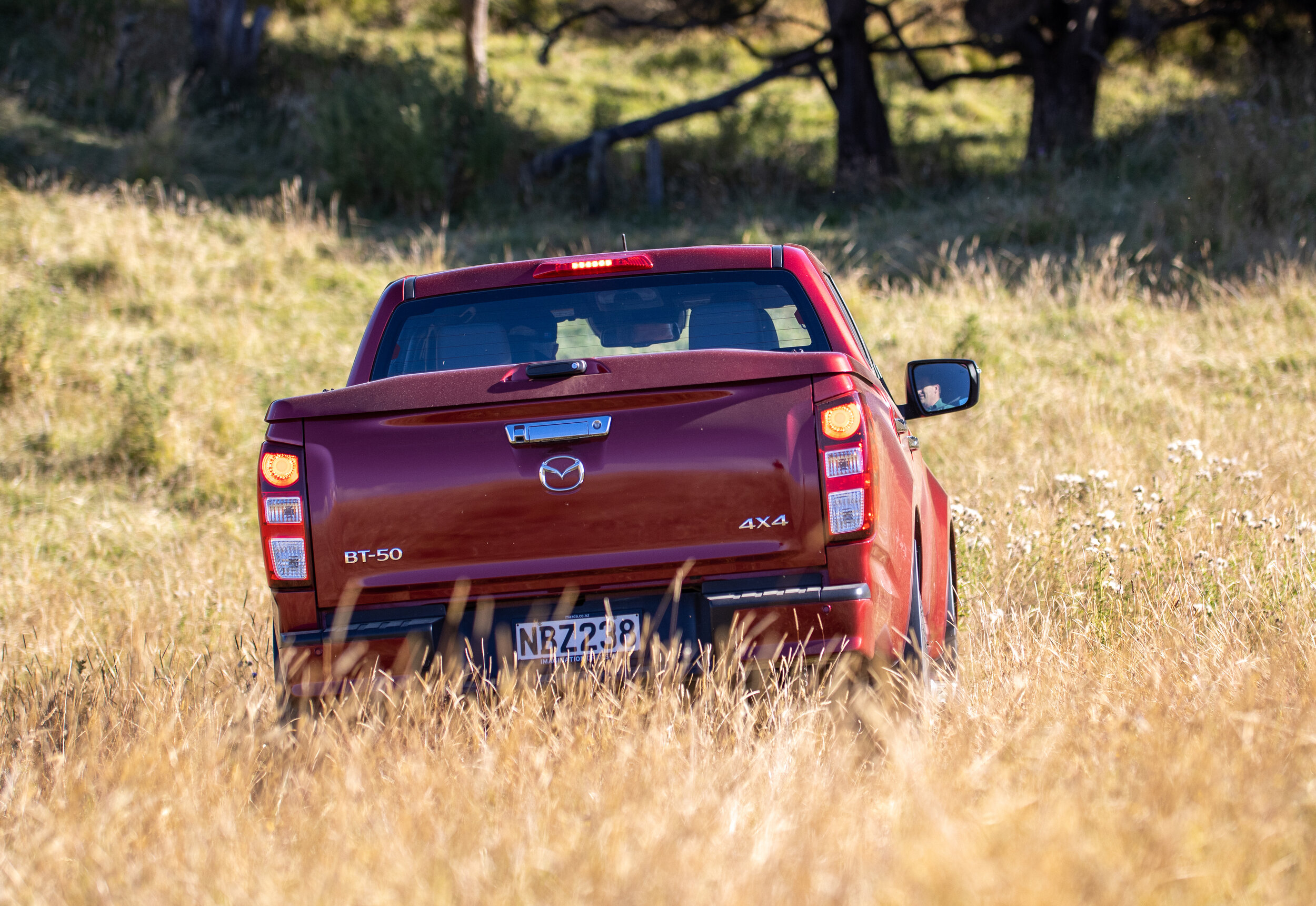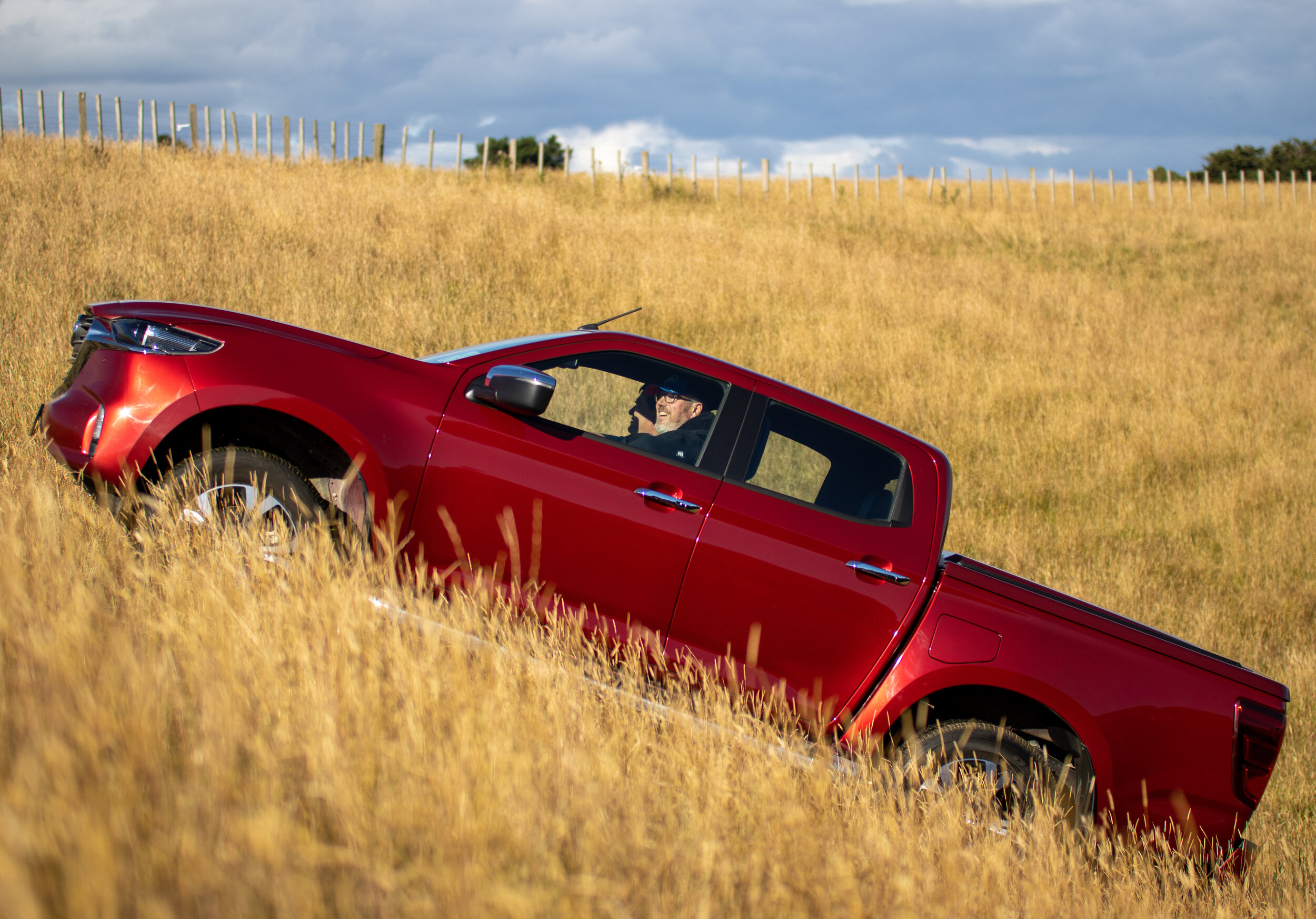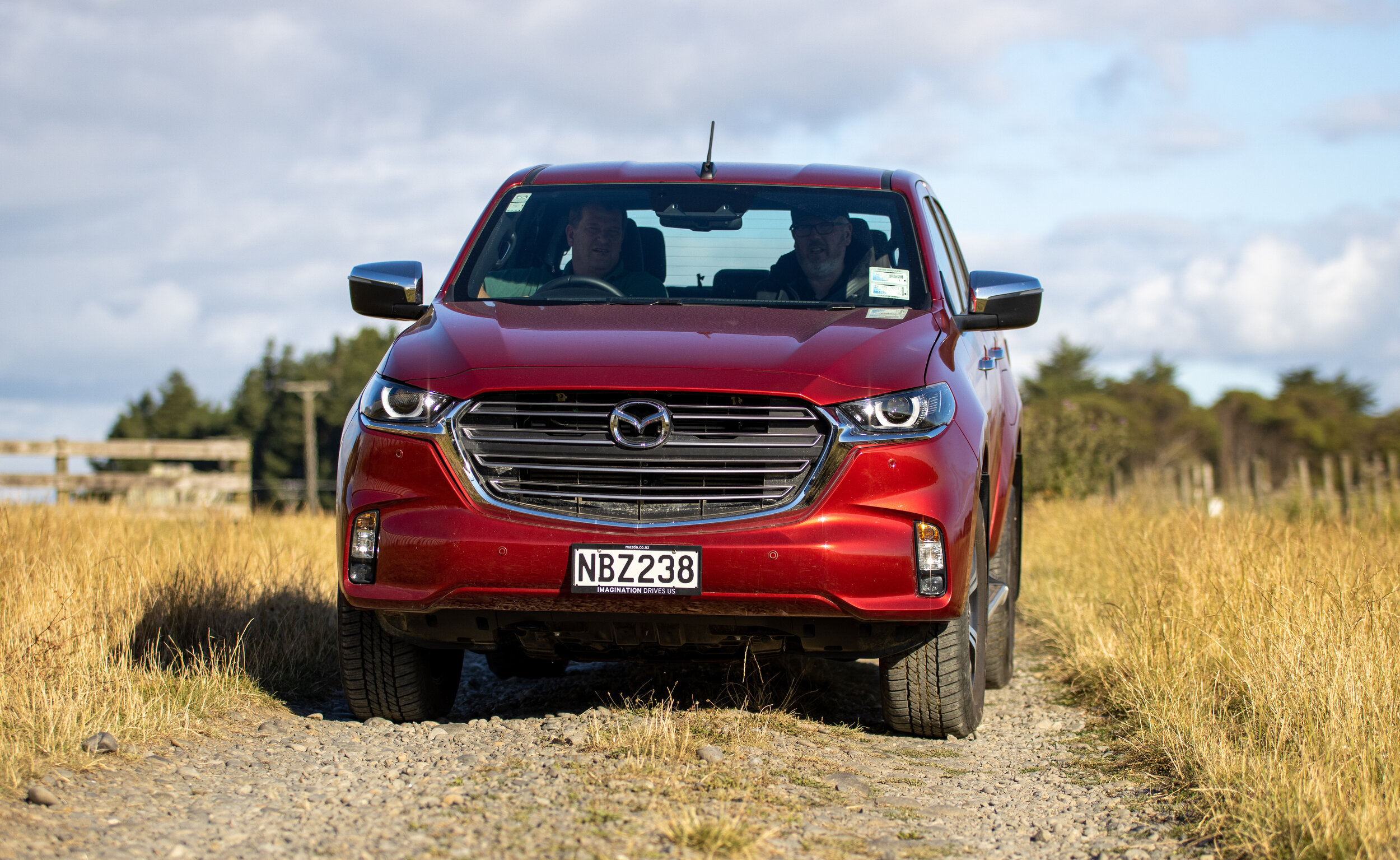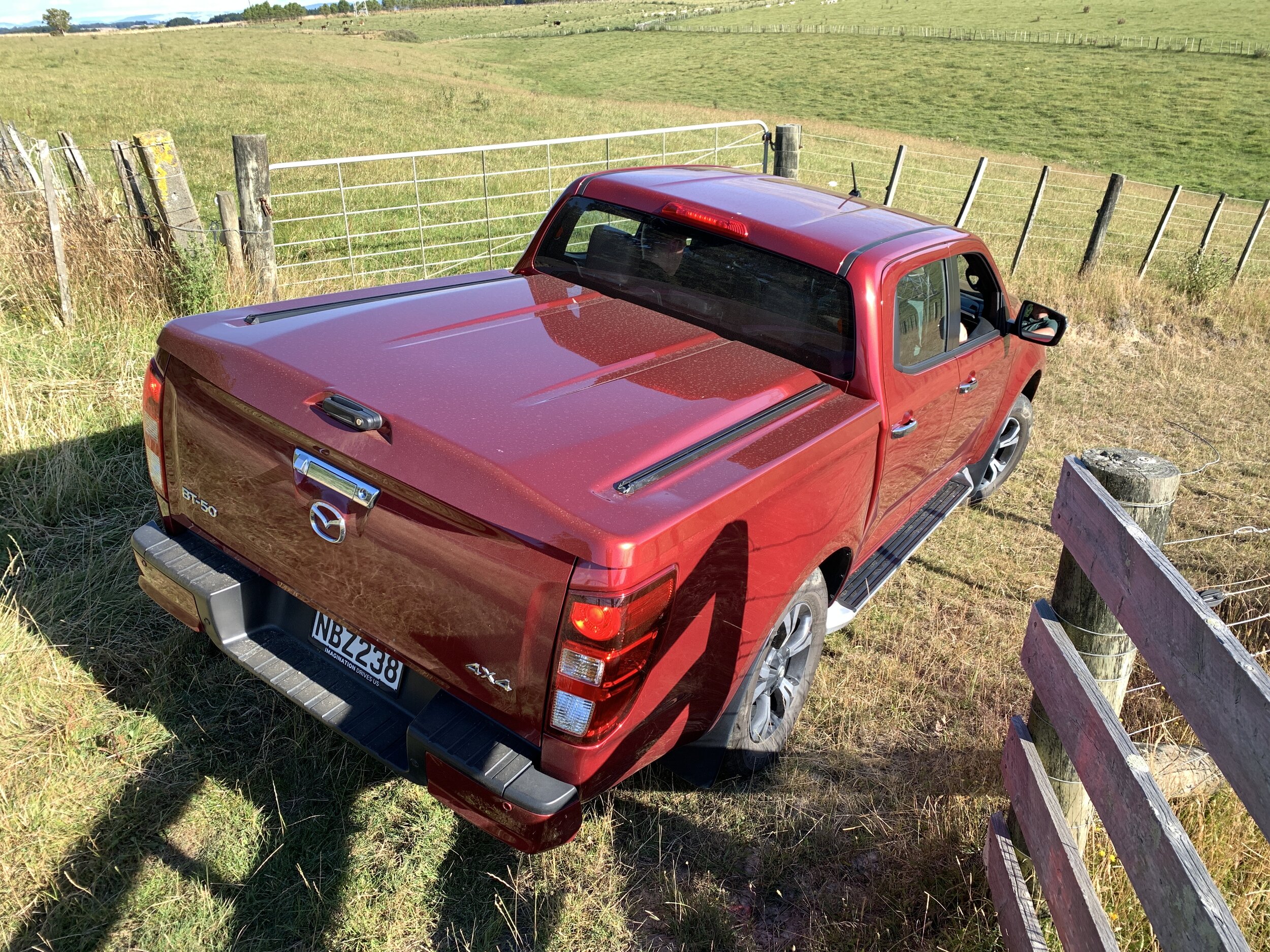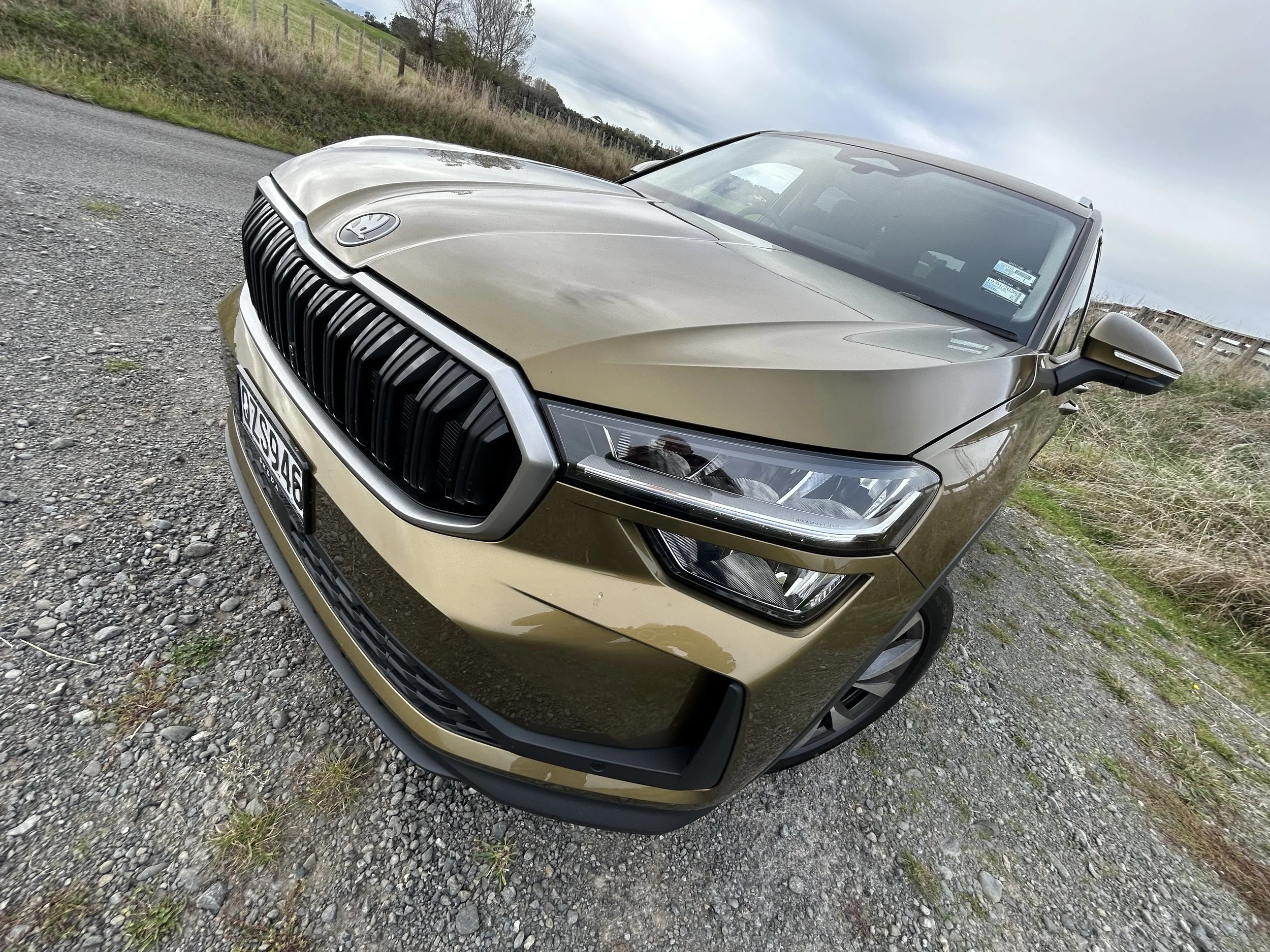BT-50’s big Northland adventure
/Mazda’s new ute takes a big drive to the beach. Actually, lots of beaches.
The BT-50 looks over the entrance to Hokianga Harbour.
Mazda BT-50 Limited
Price: $60,990
Powertrain and economy: 3.0-litre turbo-diesel four-cylinder, 140kW/450Nm, 6-speed automatic, 4WD, combined economy 8.1L/100km (as tested), CO2 208g/km.
Vital statistics: 5280mm long, 1870mm wide, 1790mm high, 3125mm wheelbase, 18-inch alloy wheels.
We like: Much improved ute design; driving manners almost SUV-like; impressive fuel economy; appealing price.
We don’t like: Some safety technologies are a bit intrusive; some electronic interfaces difficult to operate.
HERE’S a question that is almost impossible to answer: Which Northland beach is the most attractive?
Is it Mangawhai Heads, Langs Beach, or Waipu Cove? Sandy Bay or Ocean Beach near Whangarei? Is it one of those lovely beaches along what is dubbed the ‘Million Dollar View Road’?
Or maybe Coopers Beach or Taipa facing Doubtless Bay? Tokerau Beach or circular Maitai Bay on the Karikari Peninsula? Spirits Bay with its stunning sand right at the top? Ahipara Beach down the other side? Or maybe all the little coves along historic Hokianga Harbour?
It’s an extremely difficult choice. There are dozens of beaches and 10 major harbours along the region with the longest coastline – it stretches a massive 3200km – and at times it seems that each one is even more lovely than the one before.
I know all of this from having just toured quite a number of them in Mazda’s latest BT-50 ute.
Hokianga history. Hidden between a primary school and a bowling club at Kohukohu is a part-buried stone arch, the remnant of New Zealand’s oldest bridge, built in the 1840s using Sydney sandstone that was ship's ballast.and seen in this photo (below) taken in the 1860s.
Our Northland circuit was aboard the top BT-50, a 4x4 Limited, which at $60,990 achieves price advantage over almost all the competition, including the Isuzu D-Max equivalent, the X-Terrain. How’s that for re-setting retail thinking?
Mention also has to be made of the BT-50’s warranty. The ute’s new vehicle factory warranty covers five years or 150,000km, and Mazda NZ also offers a $250 fixed-cost servicing programme as well as on-call roadside assist, also for five years. That’s appealing.
Our plan for the beach-hopping journey through our northern-most region was to keep off State Highway 1 as much as possible, instead tracking up the east coast all the way to Cape Reinga, and then back down the west coast to Northland’s southern border halfway down the Kaipara Harbour – and visit as many beaches as we could along the way.
That’s a lot of beaches …. and a lot of winding secondary road to get to them. But this was the very environment that underlined the improvements achieved with the new BT-50. At the Limited level it is very much a road-oriented ute, with its 18-inch Bridgestone Dueller 265/60 tyres combining with new electric power steering to offer nice driving balance.
Of course the fact the ute continues with the live rear axle with leaf springs setup that is common on one-tonne utes, meant things often became quite juddery when negotiating some badly corrugated unsealed beach access roads. But the BT-50 handling it all, and the ability to move into 4WD High at speeds of up to 100kmh gave additional handling security.
A carving of enigmatic Kupe guards the entrance to the new cultural centre at Opononi.
And engine grunt? The 3.0-litre four cylinder turbo diesel aboard the ute is all Isuzu, a manufacturer that prides itself for making solid truck engines. For this iteration the engine, which was aboard the previous D-Max, has undergone various internal improvements that have added 10kW of power and 20Nm of torque.
The engine now offers 140kW of power and 450Nm of torque, with that torque available from 1600rpm to 2600rpm, which is right in the revolutions zone that the BT-50 operated virtually all the time. So it worked well, with hardly any stresses on the six-speed automatic transmission. As a result, we completed our Northland journey with an average fuel consumption figure of 8.1 L/100km, which was almost right on the button of the claimed 8.0 L/100km for 4x4 models.
A feature of this new ute is that it carries more than 20 passive and active safety technologies as part of what is called Advanced Driver Assist System. It’s very comprehensive, and ranges from automatic emergency braking to cruise control with stop/go, traffic sign recognition and blind spot monitoring, hill descent control to trailer sway control.
Overlooking a sea of avocados in northern Northland.
Some of it is a bit intrusive. For example the traffic sign recognition system audibly lets you know every time you have moved in or out of every speed zone and also complains whenever you are just a few kays above the speed limit. Same with the lane departure warning system, which also tugs on the steering wheel whenever it judges the ute is starting to wander.
If can become a little tiresome. Still, from the safety perspective it is far better to have such features aboard than not. And they have all contributed to the BT-50 being recognised as among the safest utes on the New Zealand roads, carrying a five-star ANCAP crash safety rating.
As we tracked north and visited to some lovely beaches and historic harbours, we eventually got past Mangonui and its famous fish ‘n chip shop (which has just been renamed Mangonui Fush Shop, for heaven’s sake), and stopped for the night at Taipa.
Maitai Bay at the top of the Karikari Peninsula
Now here was a magnificent beach. White sand, gentle surf, views out across Doubtless Bay, and a new bridge across the river of a design reflective of a sea-going double hulled waka, all to acknowledge that Taipa was one of the first – if not the first – landing places by Kupe, the great Polynesian explorer and navigator who discovered and named Aotearoa more than 63 generations ago.
There’s also a monument alongside the bridge’s western abutment that is a combination of a Pou Whenua marking Kupe’s landing, and a memorial that commemorates locals who died during the two world wars.
Beauty, tranquility, history … it was all there at Taipa. We agreed these factors could combine to make it Northland’s most attractive beach.
But then a couple of days later we arrived in the historic Hokianga Harbour, and our thoughts began to unravel. Because there at the little settlement of Opononi was a brand-new visitor attraction called Manea: Footprints of Kupe, an impressive multi-sensory journey of guided storytelling that tells the tale of the voyage and life of our country’s original coloniser – who, claim local iwi, landed first at Hokianga and based himself there for 40 years before journeying back to Hawaiki.
Pohutukawas are a feature of Northland's beaches. They provide great shelter.
It’s interesting to note that there was some local opposition to the creation of Footprints of Kupe because of fears it would ruin the relaxed vibe that is such a feature of the Hokianga. But the facility, opened late last year, is brilliant. And even better news is that Te Hua o Te Kawariki, the charitable trust that operates the facility, represents the harbour’s four marae, and all profits are returned to these marae for community projects.
As we used our BT-50 to wander around the Hokianga and visit its series of villages such as Kohukohu, Rawene and Horeke, it became increasingly obvious that the harbour is a massive cradle of history – Maori and European – and that the Footprints of Kupe simply adds to that.
So we decided that even though Hokianga isn’t a beach per se, it is part of the regional coastline and its combination of beauty, community and history makes it Northland’s most attractive beach.
And as for the new Mazda BT-50? Well, I’d say its combination of design, performance, comfort and safety specification puts it right up there as one of New Zealand’s best utes and clearly my view is widely shared.
Whereas last year a total of 1812 BT-50s were sold, in the opening two months of this year 466 have been registered. If that rate continue, this line could end the year with close to 3000 sales.
Characterful speed signage outside The Marlin hotel at Whangaroa.













